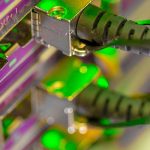OpenID Connect, or OIDC, is an open specification for authentication and single sign-on (SSO) that was developed on top of the OAuth 2.0 protocol. It standardizes the process for user authentication, making it easier for users to access various applications or websites.
Initially created in 2005, OpenID was updated in 2014 to launch OpenID Connect, which improved identity management, interoperability, and support for different types of applications. The protocol allows websites and authentication services to securely exchange information, enhancing the user experience and reducing the risk of data breaches involving credential theft.
One of the key benefits of OIDC is that it enables reliable and secure user verification without the need for providers to store or manage user passwords. Additionally, it simplifies the process of accessing multiple applications with a single sign-on, improving convenience and reducing website/app abandonment.
By leveraging OIDC-enabled SSO, organizations can streamline identity management, manage fewer identities, and apply access policies across multiple applications. The protocol also allows service developers to obtain user profile information in a safe and interoperable manner.
OpenID Connect works by leveraging six key components including users, authentication, tokens, clients, relying parties, and OIDC providers. The authentication process involves users providing their credentials, authentication by the identity provider, and the issuance of an identity token to authenticate the user and grant access to the application.
OpenID Connect can be used in various scenarios, allowing users to reuse existing accounts on multiple applications and create a hub of identity providers. It also serves as a proxy for protocols like SAML, enabling seamless integration with resource-constrained devices.
In comparison to SAML and OAuth 2.0, OIDC focuses on user authentication and SSO capabilities, enhancing and depending on OAuth 2.0. OAuth 2.0 is primarily an authorization framework for resource access and sharing, while SAML enables different security domains to exchange authentication and authorization data using XML.
Overall, OpenID Connect provides a standardized and secure way to authenticate users, streamline identity management, and enable convenient single sign-on experiences across multiple applications.





